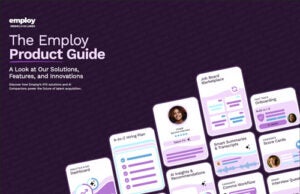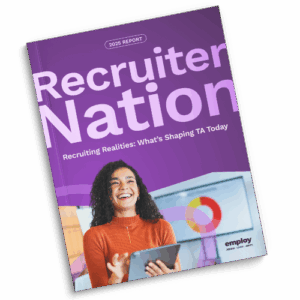In the fast-paced world of scaling organizations, seamless integration between hiring tools and HR systems is crucial. We’ve gathered insights from HR Managers and Senior HR Coordinators, among others, to bring you nine expert tips. From mapping data fields accurately to centralizing data management for efficiency, discover how these professionals ensure smooth collaboration and data flow.
- Foster HR and IT Collaboration
- Map Data Fields Accurately
- Prioritize Clear Data Governance
- Select Tools with Open APIs
- Integrate with Compatibility Focus
- Invest in Scalable HR Systems
- Adopt an API-First Strategy
- Establish Detailed SOPs for Stakeholders
- Centralize Data Management for Efficiency
Foster HR and IT Collaboration

Ensuring seamless collaboration and data flow between our hiring tools and other HR systems is paramount in the efficient functioning of our scaling organization. We recognize the significance of integration, as it streamlines processes and minimizes discrepancies, fostering a cohesive work environment.
To achieve this, we prioritize compatibility and interoperability when selecting our tools and systems. This entails thorough research and vetting to ensure seamless communication and data exchange. We invest in robust APIs and integration platforms to facilitate smooth data transfer across platforms.
One valuable lesson we’ve learned is the importance of ongoing communication and collaboration between HR and IT teams. Clear and open channels of communication ensure that any issues or challenges in integration are promptly addressed and resolved. Regular meetings and check-ins between the two departments help align goals and strategies, fostering a culture of collaboration and problem-solving.
Fostering a culture of continuous learning and adaptation is key. As technology evolves and our organization scales, we remain agile and open to adopting new tools and methodologies to enhance our HR processes. This proactive approach ensures we stay ahead of the curve and maintain efficiency in our operations.
Bradford Glaser, President and CEO, HRDQ
Map Data Fields Accurately

Perhaps the most important stage in integrating any system is to ensure that data fields are mapped correctly. Unless this is done and any discrepancies are resolved before full integration, this can result in data inconsistencies, corruption of data, or even data loss. Rather than spending time automating everything, it can be tempting to include manual processes to get integrations up and running more quickly.
However, anything that is done manually will take longer and is more susceptible to human error. It is far more efficient, accurate, and cost-effective to set up automatic syncing between the systems. This entails more effort and planning up front but ensures ongoing updates without the need for any human intervention.
Wendy Makinson, HR Manager, Joloda Hydraroll
Prioritize Clear Data Governance

Establishing a clear data-governance protocol early on in a scaling business is an effective tip. It involves defining roles, responsibilities, and processes for managing and maintaining data integrity across systems. In my experience as an HR leader, we found that creating a centralized data-governance team was instrumental.
The team was responsible for setting standards for data input, ensuring consistency across systems, and resolving any errors quickly. Additionally, regular communication and collaboration between HR teams, the IT department, and key stakeholders are essential. Open communication channels and cross-functional collaboration help to identify potential challenges.
Prioritizing data governance and establishing clear communication channels have been the right choices for our organization. The smooth data flow between hiring tools and HR systems during our organization’s scaling journey was possible because of clear data governance.
Saikat Ghosh, Associate Director of HR and Business, Technource
Select Tools with Open APIs

We prioritize choosing hiring tools that offer open APIs or pre-built integrations with our existing HR platforms, like payroll or performance management systems.
This allows for a smooth flow of data — candidate information from the hiring tool automatically populates into the employee profile in the HR system, for example. This eliminates manual data entry, reduces errors, and saves valuable time for our HR team.
Don’t underestimate the importance of testing integrations thoroughly before full deployment. Ironing out any wrinkles early on ensures a smoothly running system from the get-go.
Kimberley Tyler-Smith, VP of Strategy and Growth, Resume Worded
Integrate with Compatibility Focus

In our scaling organization, ensuring smooth data flow between hiring tools and other HR systems has been crucial. One key tip I’ve learned is the importance of choosing systems that can integrate seamlessly. It’s essential to prioritize compatibility when selecting tools, as it significantly simplifies data management and reduces manual work.
A lesson I’ve personally taken to heart is the need for thorough testing and customization. For example, when we first integrated our Applicant Tracking System (ATS) with our HR Information System (HRIS), we encountered issues with data syncing. This required us to work closely with the vendors to customize the integration, ensuring that data flowed correctly between the systems.
This experience taught me that proactive involvement in the integration process, along with regular checks and adjustments, is vital to maintain efficient operations and avoid data mishaps. It’s a strategy that has paid off well, keeping our HR processes streamlined and effective as we grow.
Ana Alipat, Recruitment Team Lead, DayJob Recruitment
Invest in Scalable HR Systems

Ensuring smooth collaboration and data flow between hiring tools and other HR systems is critical for maintaining operational efficiency. One key strategy is integrating all our HR tools into a unified system that allows for seamless data exchange and access across different platforms. This integration reduces manual data entry, minimizes errors, and ensures that all team members have access to real-time, consistent information.
A valuable lesson learned from this process is the importance of choosing scalable and flexible software solutions from the outset. Early in our growth phase, we opted for systems that could not easily adapt to increased demand or integrate with new tools, leading to significant challenges as we expanded.
Transitioning to more adaptable solutions early on would have mitigated these issues. Therefore, my advice is to invest in scalable systems that can grow with your organization and easily integrate with new technologies as they are adopted. This foresight saves considerable time and resources in the long run and supports a more agile HR infrastructure.
Steven Mostyn, Chief Human Resources Officer, Management.org
Adopt an API-First Strategy

As the head of HR at a rapidly scaling startup, I’ve learned that integrating our hiring tools with the rest of our HR tech stack is absolutely critical for growth. When hiring ramps up, keeping data synchronized becomes mission-critical yet incredibly difficult.
The key for us has been taking an API-first approach. We ensure every piece of HR software we use has open APIs that allow easy integration. That way, we can build pipelines to pass candidate and employee data between our applicant tracking system, HRIS, payroll provider, and the rest of our stack.
With this API-driven strategy, we maintain one source of truth for all people’s data that flows seamlessly throughout our systems. Our teams collaborate much more smoothly when they’re looking at the same information. It’s also reduced our risk of data discrepancies or loss during high-velocity hiring.
Though it requires some upfront work, integrating through APIs has been the best way for us to keep a unified view of our talent as we scale at warp speed. It makes collaboration smooth and helps us hire smartly even in hypergrowth mode.
Sunaree Komolchomalee, Head of HR, Cupid PR

Establish Detailed SOPs for Stakeholders
By creating SOPs for all stakeholders involved in the hiring process, we establish who is responsible for each step in the hiring process. This way, everyone involved is accountable for keeping notes and records of candidate feedback as they progress through our process.
It helps to take screenshots or even screen recordings of the acceptable process. Also, providing written examples of feedback as guidelines will make the effort seamless across platforms.
Jarir Mallah, Human Resources Manager, Ling
Centralize Data Management for Efficiency

The lesson I’ve learned about ensuring smooth collaboration and data flow between our hiring tools and other HR systems as we’ve been scaling is that you need to integrate them and focus on centralized data management. You can’t keep your hands on everything without help. That’s the reality of scaling. It is very difficult to understand and acknowledge that a time has come when you simply cannot do everything on your own. You aren’t going to remember every worker, every issue, every recruitment process.
As we started scaling at Delante, I was lucky to have a boss who agreed to invest in an HRIS. It’s a system that integrates seamlessly with other tools used across the organization. And as much as I’m not a tech person, this is incredibly helpful. You really don’t need to be punishing yourself by trying to remember every single tool’s use and data. You can have it organized and automated for you.
Now, I have a central repository for all employee data. So all information is consistent and easily accessible across platforms. Maybe an example will be helpful. Integrating your HRIS with ATS and payroll systems can streamline the recruitment process, onboarding, and compensation management.
But when choosing a system like this, you need to remember to go for systems that offer APIs and standard integration capabilities with other software used in the organization. This flexibility has been essential in allowing us to adapt quickly to new tools and technologies without disrupting existing processes. Always prioritize scalability and customization options when selecting HR systems to ensure they can evolve with your organization’s growing needs.
Karolina Górska, Senior HR Coordinator, Delante
















